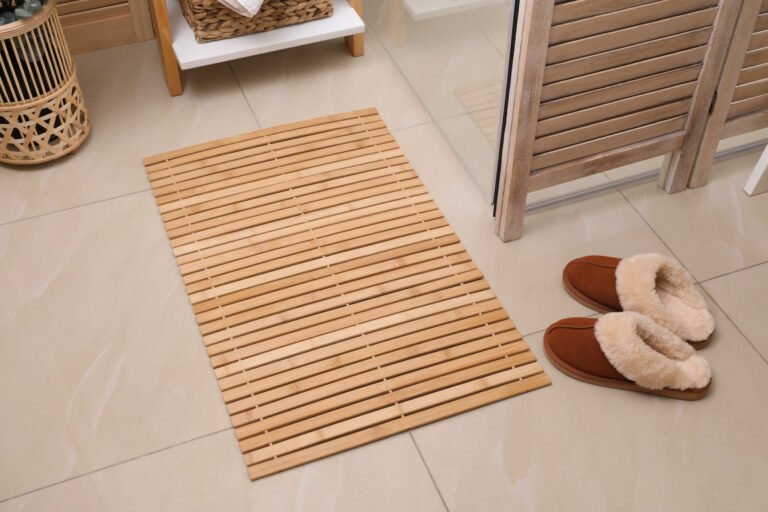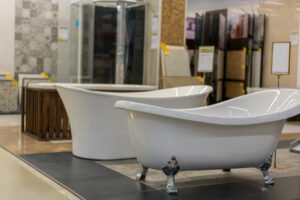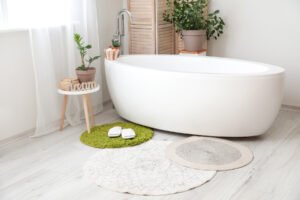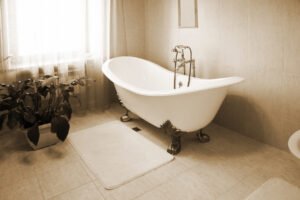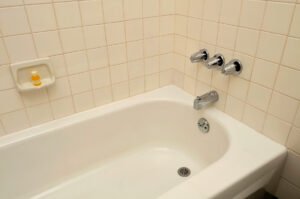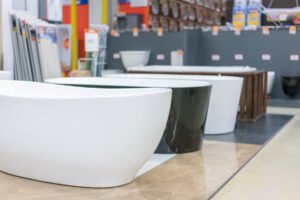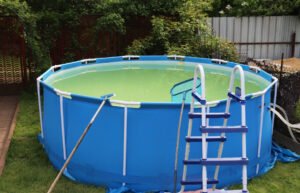Showers are an essential part of our lifestyle that promotes hygiene and cleanliness. That is why many people are picky and concerned about the furnishings and elements of their bathroom. Yet one of the commonly neglected bathroom elements remains the bath mats.
A good bath mat is essential to boost hygiene and nurture clean surroundings without creating a huge mess. And though cloth mats are a generic option, they can be clumsy, so are bamboo mats the new alternative? If yes, are bamboo mats really good? Let’s find out!
Bamboo mats are good-looking, highly functional, and trendy bath mats for bathrooms. They are eco-friendly, easy to clean, and provide zen-like aesthetics. However, they do require good upkeep and extra care for longevity and durability.
Advantages of Bamboo Bath Mats?
Wooden bamboo mats offer many advantages that make them a better choice than regular bath mats and bath rugs. Below are some of the most influential pros of bamboo bath mats that will convince you to upgrade your regular mat.
1. Hygienic: A bamboo bath mat is more hygiene-friendly than memory foam or a chenille bath mat. When a traditional bath rug is not cleaned regularly, you will have dirt particles on your feet, which can be annoying. But the pleasantly sturdy surfaces of bamboo mats don’t attract dirt.
Moreover, there is always stress about mold and mildew, with soggy and damp mats unsuitable for your health and sanitation. But bamboo mats are naturally better resistant to molds, and their quick drying ability makes them a more acceptable option.
2. Waterproof and Fast Drying: Bamboo bath mats are naturally water-resistant. Moreover, compared to the soggy cloth mats, bamboo mats dry very quickly, especially the stunning lattice design that allows unrestricted airflow.
You can place these mats beside the tub, over a towel rack, or hang them somewhere for quick drying. Drying these bamboo bath mats occasionally can also increase their lifespan.
3. Eco-Friendly: Bamboo bath mats are the best sustainable option if you advocate saving the environment. They are made of natural materials, recyclable, biodegradable, and have a longer lifespan. Also, bamboo is one of the fastest-growing plants, with some growing 35 inches per day.
The regular mats are mostly made up of synthetic nylon polymers, which are further made from oil waste products. This makes them non-recyclable and non-biodegradable, costing the environment and the future.
So, in conclusion, it is wiser to choose the costly yet sustainable bamboo bath mats that last longer than the untenable soggy rugs that have a brief life span, making them lie in the garbage dump forever without biodegradation.
4. Low Maintenance: Bamboo bath mats can be dried quickly, and an occasional wipe down is enough to clean them compared to a regular cloth bath mat that becomes soggy and grows mold, leaving a foul odor.
If you have a lattice design bamboo bath mat, you just need to roll it up, hang it, or place it over the rack for easy and quick drying. Regular bath mats are generally recommended to be dry cleaned as hot water can destroy synthetic materials.
5. Close-to-Nature Aesthetics: Bamboo wooden bath mats are functional and extremely sleek, and stylish. They are perfect for creating a ritzy, pristine bathroom area. Furthermore, bamboo or wooden mats create a beautifully rustic and tranquil Mediterranean feel to the bathroom area.
Also, compared to the clumsy, soggy regular cloth mats, a wood mat is a far better and unique choice. They are voguish, innovative, and polished, which helps you achieve a spa-like feel in your bathroom.
6. Versatile: Bamboo bath mats are versatile as they can be used in different places and at different times. For example, you can use them outdoors for backyard BBQs, saunas, or even outdoor showers.
Or, after a quick swipe, you can also use them indoors as a dog mat or for regular bathroom use. This feature of these wooden mats makes them dynamic and worth the price.
7. A Safer Option: Bamboo bath mats nowadays come with silicon and rubber grips underneath, ensuring safety to the best of their ability. You will feel much more steady standing on these wooden mats with a grip pad that creates stability and restrains slipping. This makes them kid-friendly, too.
Also, remember that most bath rugs do not come with a grip pad; you would have to purchase them separately.
Disadvantages of Bamboo Bath Mats
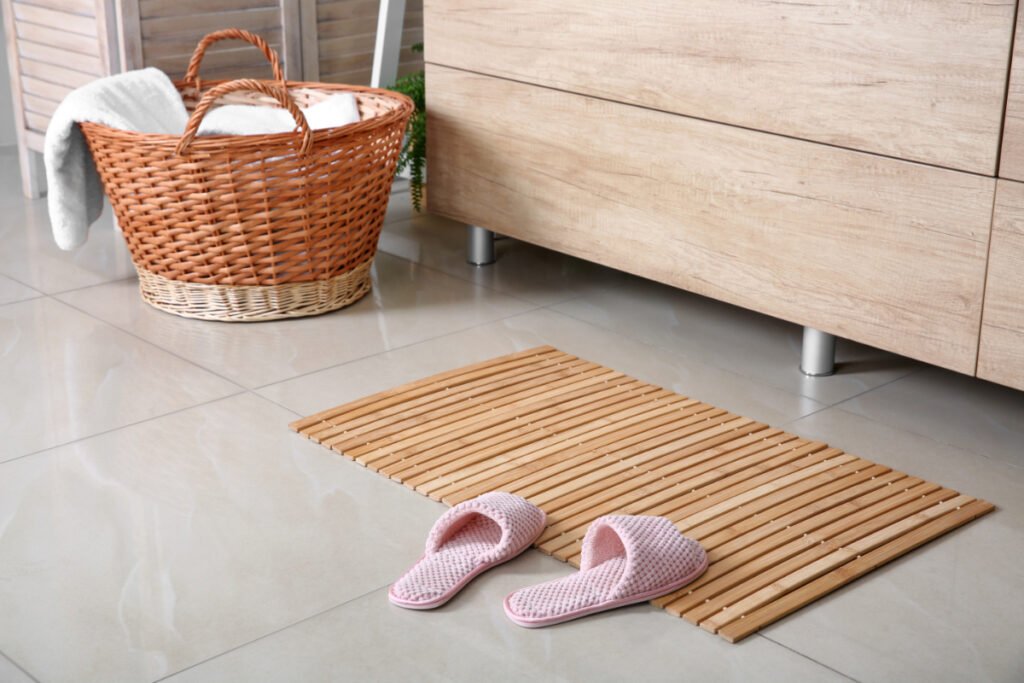
The bamboo bath mats are all-natural and durable, but they also have some disadvantages. So it is equally important to know the cons before deciding on your bath mats. Hence, let’s take a quick look.
1. Need More Aftercare: Though the bamboo mats are durable, low maintenance, and easier to clean, good upkeep is necessary to help them last longer. Compared to regular mats, bamboo mats have slats and a lattice design that allows water to pass through them and wet the bathroom floor. Hence, you may need to dry your bathroom from time to time.
2. Regular Cleaning: Bamboo mats should not be kept wet, underwater, or in showers for long periods. They must be dried regularly to avoid mold and increase their longevity. Wiping them by turning sides vertically can be aggravating.
3. Can Get Moldy: Though bamboo mats are water-proof, do not absorb much water, and are naturally resistant to mold and mildew, they require maintenance if they are frequently wet. This is because bamboo is a hardy grass and a natural material that can harbor mold, mildew, and fungus if not appropriately maintained.
4. Safety Issues: It can be highly unsafe if you purchase a bamboo mat with no grip pads, as a regular bamboo or wooden bath mat can easily slip on bathroom floors. So buying a grip pad can solve this small problem.
5. Leave the Feet Wet: Bamboo mats, unlike cloth mats, can’t absorb the excess water on your feet in seconds. So they indeed leave your feet wet, which can be uncomfortable and annoying for regular mat users.
Best Bamboo Bath Mats for Bathroom Floor
Bamboo mats are versatile and dynamic. They come in various designs and styles that are not only good-looking but also highly functional. Let’s look at some of the best bamboo mat designs.
1. Slatted Design: Slatted Bamboo mats come with slits vertically, horizontally, or diagonally that are precisely measured. This slatted design helps reduce drying time, and cleaning them with a swipe becomes easier. Also, this makes them look sleek, stylish, and perfectly minimal.
2. Runner Rug Design: If you want bamboo mats to feel and look like traditional, luxurious bath mats, then the bamboo or teak bath mat is your go-to option. These mats feel identical to cloth mats and rugs and can be folded. As these runner rugs are bigger in size, you can also use them in living spaces and bathrooms for zen-like interiors.
3. Lattice Design: Lattice design is a method of creating types of resolved incomplete block designs. The rows and columns design is especially popular and used in these mats.
This lattice design creates a vent that allows free air flow, keeping the bamboo and teak bathroom mat dry and restraining mold and mildew. In addition, this design makes the mat easier to fold, roll, and hang, making them handy.
4. Foldable Design: Some slatted bamboo mats have added hinges in the middle, making them easier to fold. This folding also occupies little space and makes it extremely easy to store whenever it is not in use.
Do Bamboo Mats Get Moldy?
Bamboo mats are naturally resistant to water, mold, and mildew and can withstand moisture and stains. However, bamboo is a hardy grass, so when bamboo mats are left soaking in the water for long periods, they are susceptible to mold and mildew.
These molds can further turn deadly, damage your bamboo mats permanently, and even harm you if contacted.
Bamboo is a natural material with high contents of starch and sugar, making it prone to fungal attacks. Thus, extra care and upkeep are required to maintain the longevity and durability of this bamboo product.
How to Take Care of Moldy Bamboo Mats?
Although bamboo is as durable as wood, it is grass, so enough moisture on it can harbor the growth of molds. However, you can dry out your bamboo mats and give them a protective coating to stop the recurrence of the mold.
Clean your moldy bamboo mat outside the house to prevent the mold from spreading inside. Then, follow the steps shown below.
Step 1: Wipe the surface with a rag
Wipe the surface of the bamboo mats with a rag. Then, using a disinfectant, treat all the areas that have been turned black or weakened by mold. You can use vinegar, ammonia, lemon oil, and bleach as cleaners. Don’t use ammonia and bleach together, as they can release poisonous gasses.
Step 2: Spray vinegar or lemon juice on molds
Then, using a plant spray bottle, you can spray full-strength vinegar or lemon oil directly on the mold. For tough mold, use a powerful combination of 1 cup ammonia, ½ cup vinegar, and ¼ cup baking soda in a gallon of water. These ingredients release carbon dioxide, which is effective in killing molds.
Step 3: Scrub the molds off with a brush
Use a toothbrush to scrub the molds in the crevices, joints, and corners that cannot be reached by the hand.
Step 4: Rinse the mat with water and dry
Rinse off the affected area with water and let it dry; if possible, you can also use a hairdryer. Then, place the mat under the sun to thoroughly dry and purify it. Remember not to use these mats when already wet to restrain them from losing shape.
Step 5: Apply turpentine and polyurethane
Once completely dried, wipe the bamboo mat with turpentine to clean it from any natural oil deposits. Then, dry it with a rag. Lastly, three coats of polyurethane were applied to prevent the bamboo from moisture and stop further mold growth.
How to Clean Bamboo Mats?
Bamboo mats or teak wood mats are generally water-resistant, making them extremely easy and economical to clean. You can wash bamboo bath mats by hand in warm water with soap or cleaners until the dirt and stains are removed.
After that, rinse well and dry the wet mats simply with a towel. You can also coat them with mineral oil to prolong their longevity. Finally, always take good care of the bamboo mats to make them last longer and more durable.
Also, avoid putting wooden mats in your machine; it can damage both the mats and the machine.
When to replace your Bamboo bath Mat?
A bamboo bath mat is highly durable and can last for years. However, you must replace it if it harbors mold or fungi or becomes cracked and chipped.
Do bamboo bath mats absorb water?
The best bamboo mat is naturally resistant to water and moisture. But if kept under continuous and frequent water flow and moisture, it can absorb water and harbor mold, mildew, and fungi growth. This can also be because of the glue and chemicals present in these bamboo mats.
Is a bamboo floor mat worth the cost?
Bamboo mats are costlier than regular bath mats and rugs. However, they are ten times more durable and handy. Also, they are easy to clean and economical, making them worth the price in the long run.
Are bamboo bath mats hard?
Bamboo mats look hard compared to cloth mats, but stepping on them won’t feel like a bed of nails. Instead, they have a smooth finish that is pleasantly sturdy and seems similar to walking on the outside deck after rain.
Are bamboo bath shower mats durable?
A Bamboo shower mat is much more durable than regular soggy bath mats. With good upkeep and maintenance, it can last longer and function well. All you have to do is keep it from getting frequently wet and dry them regularly.
The Bamboo mat or teak wood bath mat is now the trendiest and most widely used bath mat in households. These are naturally resistant to water, easier to maintain, eco-friendly, and a far healthier option. And not only are these durable and easy to wash, but they also look aesthetic.
Speaking of washing, if you want to know whether you can or should wash your bath mats and find easy steps to do so, I have a detailed guide for you!

